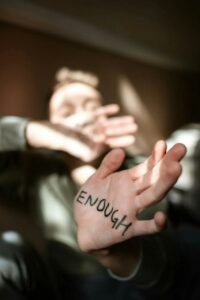Burnout to Bliss: Proven Tips for Perfect Work-Life Harmony

Hey there, lovely souls! Are you feeling weighed down by negativity? Struggling to find joy and peace in your everyday life? Trust me, you’re not alone. We all encounter negative energy, but the trick is learning how to let go of it and embrace positivity. Today, I’m going to share practical tips and powerful strategies to help you transform your life. Ready to release that negative energy and welcome more joy and peace? Let’s dive in!
Understanding Burnout

What is Burnout?
Burnout is a state of emotional, physical, and mental exhaustion caused by excessive and prolonged stress. It occurs when you feel overwhelmed, emotionally drained, and unable to meet constant demands. As the stress continues, you begin to lose the interest and motivation that led you to take on a certain role in the first place. Sound familiar? Well, it’s time to change that.

The Impact of Burnout
Burnout doesn’t just affect your work performance; it seeps into every aspect of your life. It can lead to health issues such as chronic fatigue, insomnia, depression, and anxiety. Recognizing the signs of burnout early is crucial for taking steps to prevent it from escalating. And yes, those steps aren’t just fluff – they’re game-changers.
Step 1: Prioritize Self-Care
The Importance of Self-Care
Self-care is not a luxury; it’s a necessity. Taking time to care for your physical, emotional, and mental well-being is essential for maintaining balance. Self-care helps you recharge, reduces stress, and improves overall health.


Practical Self-Care Tips
- Exercise Regularly: Physical activity releases endorphins, which are natural mood lifters. Aim for at least 30 minutes of exercise most days of the week. Don’t give me that “I don’t have time” excuse – make time.
- Eat a Balanced Diet: Fuel your body with nutritious foods. Avoid excessive caffeine and sugar, which can contribute to energy crashes. Your body isn’t a trash can, so stop treating it like one.
- Get Enough Sleep: Aim for 7-9 hours of quality sleep per night. Establish a relaxing bedtime routine to improve sleep quality. Binge-watching Netflix until 2 a.m.? Yeah, cut that out.
Step 2: Set Boundaries
Why Boundaries Matter
Self-care is not a luxury; it’s a necessity. Taking time to care for your physical, emotional, and mental well-being is essential for maintaining balance. Self-care helps you recharge, reduces stress, and improves overall health.


How to Set Boundaries
- Define Your Limits: Clearly identify what you can and cannot do. Be realistic about your workload and personal commitments. Saying “no” isn’t a sin – it’s survival.
- Communicate Assertively: Politely but firmly communicate your boundaries to colleagues, friends, and family. Use “I” statements to express your needs. “I can’t take this on right now” works wonders.
- Stick to Your Boundaries: Consistently enforce your boundaries. Don’t be afraid to say no to requests that violate them. If someone can’t respect your boundaries, they don’t respect you.
Step 3: Manage Your Time Effectively
Time Management Techniques
Effective time management is key to balancing work and personal life. By managing your time well, you can accomplish more in less time and reduce stress.


Practical Time Management Tips
- Prioritize Tasks: Use the Eisenhower Matrix to categorize tasks based on urgency and importance. Focus on high-priority tasks first. Stop wasting time on what doesn’t matter.
- Use a Planner: Plan your day, week, and month. Schedule time for work, self-care, and leisure activities. If it’s not on the schedule, it doesn’t exist.
- Avoid Multitasking: Focus on one task at a time to improve productivity and reduce errors. Multitasking is a myth; you’re just doing multiple things poorly.
Step 4: Embrace Flexibility
The Need for Flexibility
Flexibility is essential for achieving work-life harmony. Being adaptable allows you to manage unexpected changes and maintain balance.


How to Embrace Flexibility
- Flexible Work Arrangements: If possible, negotiate flexible work hours or remote work options with your employer. Work smarter, not harder.
- Adjust Your Routine: Be open to changing your routine as needed to accommodate different demands. Life isn’t rigid, and neither should your schedule be.
- Practice Mindfulness: Stay present and focused on the task at hand. Mindfulness helps you stay calm and adaptable in the face of change. Meditation isn’t just for monks.
Step 5: Cultivate a Support System
The Power of Support
Having a strong support system is vital for overcoming burnout and achieving balance. Surround yourself with people who uplift and encourage you. No more energy vampires.


Building Your Support System
- Connect with Loved Ones: Spend quality time with friends and family. Share your experiences and seek their support. Real friends won’t mind if you lean on them.
- Join a Community: Engage with communities that share your interests and values. This can be a local club, an online forum, or a professional network. Find your tribe.
- Seek Professional Help: If you’re struggling with burnout, consider seeking help from a therapist or counselor. There’s no shame in asking for help.
Step 6: Practice Mindfulness and Meditation
Benefits of Mindfulness
Mindfulness and meditation are powerful tools for reducing stress and enhancing well-being. They help you stay present, manage your emotions, and improve focus.


How to Practice Mindfulness
- Start with Breathing Exercises: Spend a few minutes each day focusing on your breath. This simple practice can calm your mind and reduce stress.
- Use Guided Meditations: Apps like Headspace and Calm offer guided meditations for beginners. Just hit play and follow along.
- Incorporate Mindfulness into Daily Activities: Practice mindfulness while eating, walking, or even working. Pay full attention to the present moment. It’s about being here, now.
Step 7: Take Breaks and Vacations
Importance of Taking Breaks
Taking regular breaks and vacations is essential for maintaining balance. Breaks help you recharge, prevent burnout, and boost productivity. You’re not a machine; don’t work like one.


How to Take Effective Breaks
- Short Breaks: Take short breaks throughout the day to rest your mind and body. Use techniques like the Pomodoro Technique to structure your work and break times.
- Vacation Planning: Plan regular vacations to disconnect from work and enjoy leisure activities. Even a short getaway can have significant benefits. Don’t wait until you’re burnt out to take a break.
Step 8: Simplify Your Life
The Power of Simplification
Simplifying your life can reduce stress and improve work-life harmony. Focus on what truly matters and eliminate unnecessary distractions.


How to Simplify Your Life
- Declutter Your Space: A tidy and organized space can improve your focus and reduce stress. Regularly clean and declutter your home and workspace.
- Streamline Your Commitments: Evaluate your commitments and let go of those that don’t align with your priorities.
- Practice Minimalism: Adopt a minimalist lifestyle by focusing on quality over quantity. This can apply to your possessions, relationships, and activities. Less truly is more.
Step 9: Engage in Hobbies and Leisure Activities
Importance of Hobbies
Engaging in hobbies and leisure activities is crucial for maintaining balance. These activities provide an outlet for creativity, relaxation, and joy.


How to Find and Engage in Hobbies
- Explore Your Interests: Try different activities to discover what you enjoy. This could be anything from painting, gardening, or playing a musical instrument. It’s about what makes you happy.
- Schedule Leisure Time: Dedicate regular time to engage in your hobbies. Treat this time as a non-negotiable part of your schedule.
- Join Hobby Groups: Connect with others who share your interests. This can enhance your experience and provide additional support and motivation. Find your fun crew.
Step 10: Reflect, Adjust, and Celebrate
Review Your Journey
Regularly take a step back and review your progress. Reflecting on your journey helps you identify what’s working and what’s not. Be brutally honest with yourself.


How to Reflect and Adjust
- Keep a Journal: Document your experiences, thoughts, and feelings. This can provide valuable insights and help you track your progress.
- Seek Feedback: Ask for feedback from trusted friends, family, or mentors. Their perspectives can help you make necessary adjustments.
- Make Adjustments: Based on your reflections and feedback, make adjustments to your strategies. Flexibility and adaptability are key to long-term success.
Celebrate Your Wins

Don’t wait until the end to celebrate. Acknowledge and celebrate your small wins along the way. Whether it’s hitting a milestone, overcoming a challenge, or simply sticking to your goals for a week, celebrate it. These victories keep you motivated and remind you of your progress. Celebrate yourself because you damn well deserve it.
In Conclusion: From Burnout to Bliss
Unlocking work-life harmony is no small feat, but with dedication and the right strategies, it’s entirely possible. These tips are designed to push you out of your comfort zone and ignite real change. Remember, transformation starts with you, and every step you take brings you closer to your goals. Share your journey and experiences in the comments below – let’s support each other on this path to balance and bliss!


